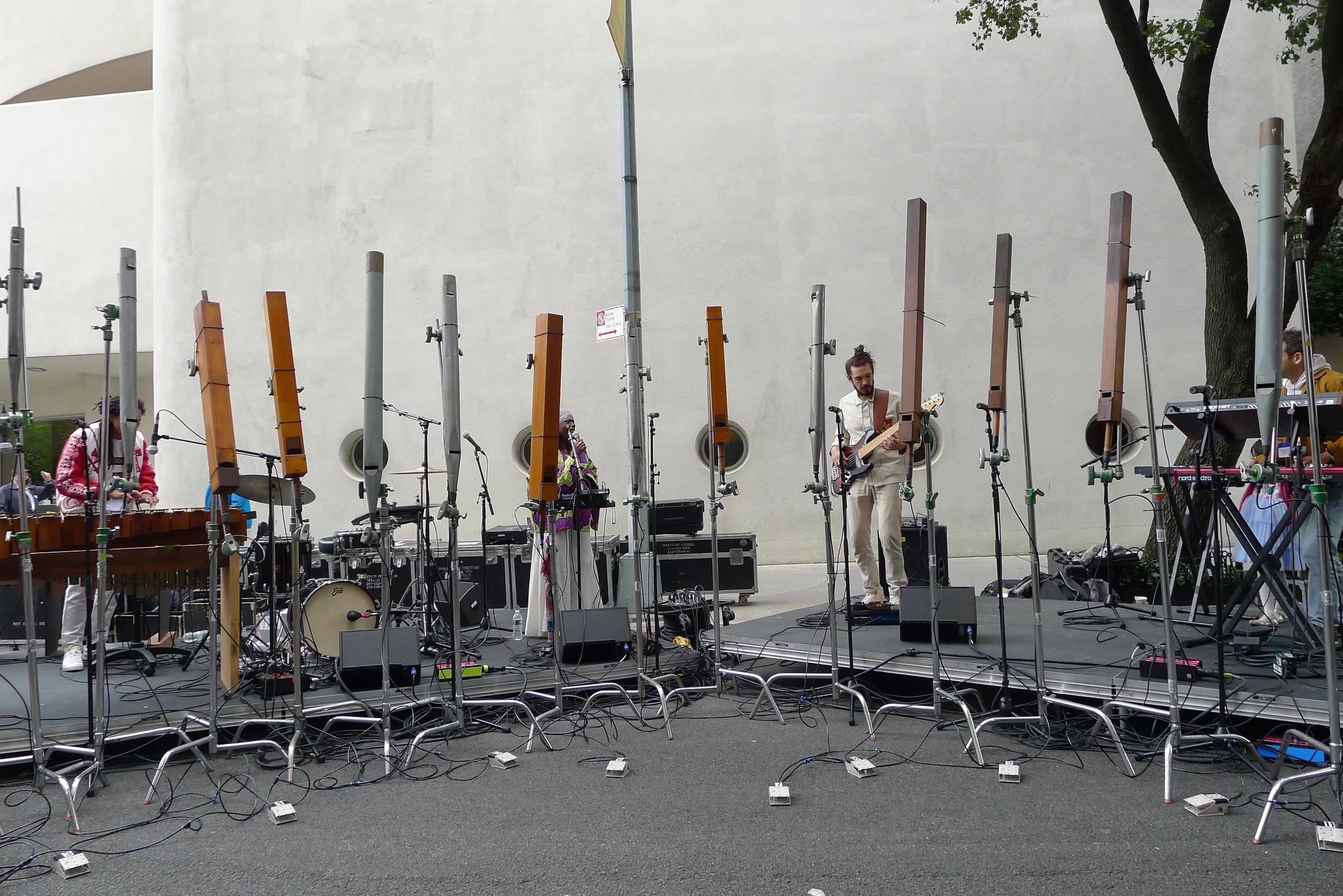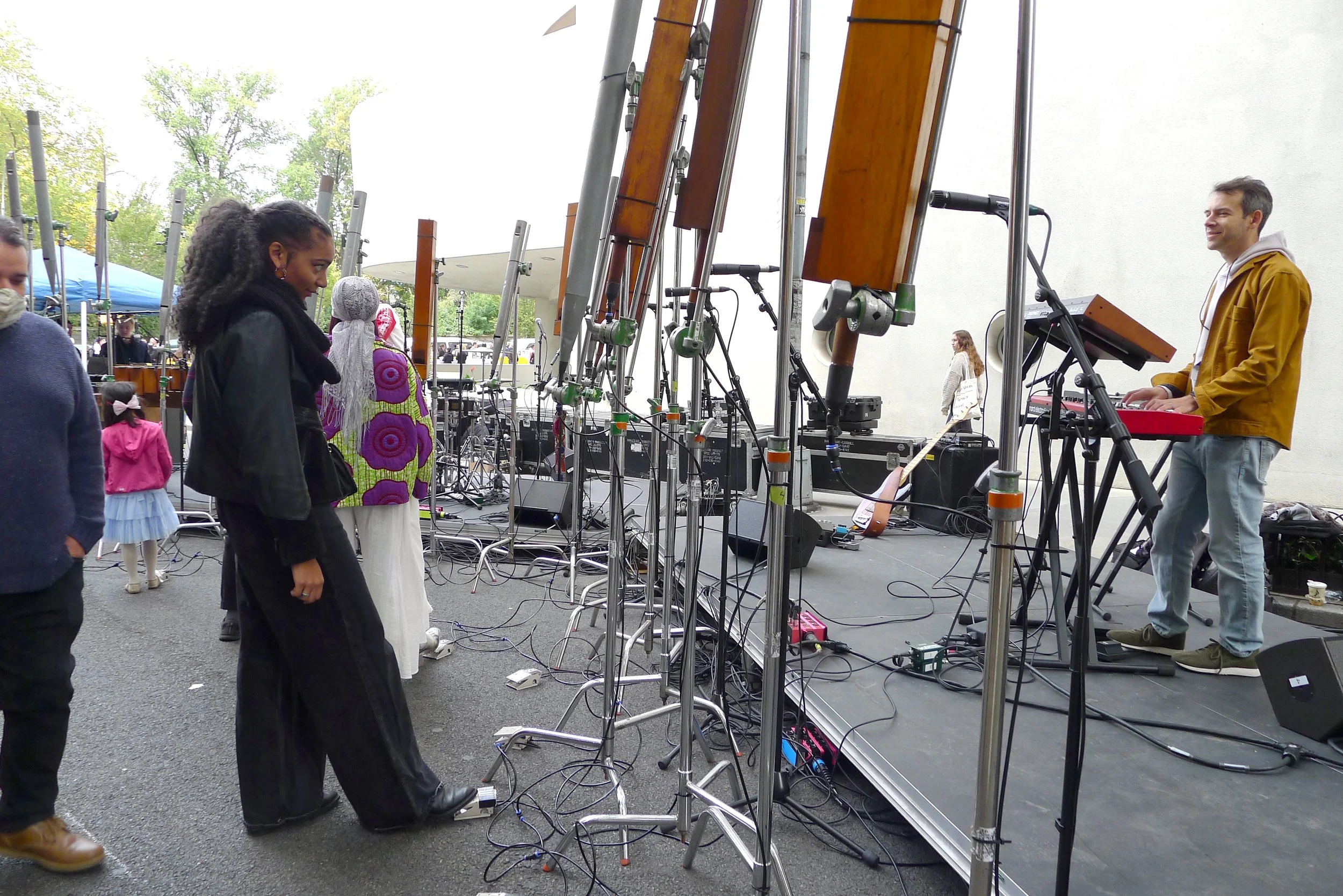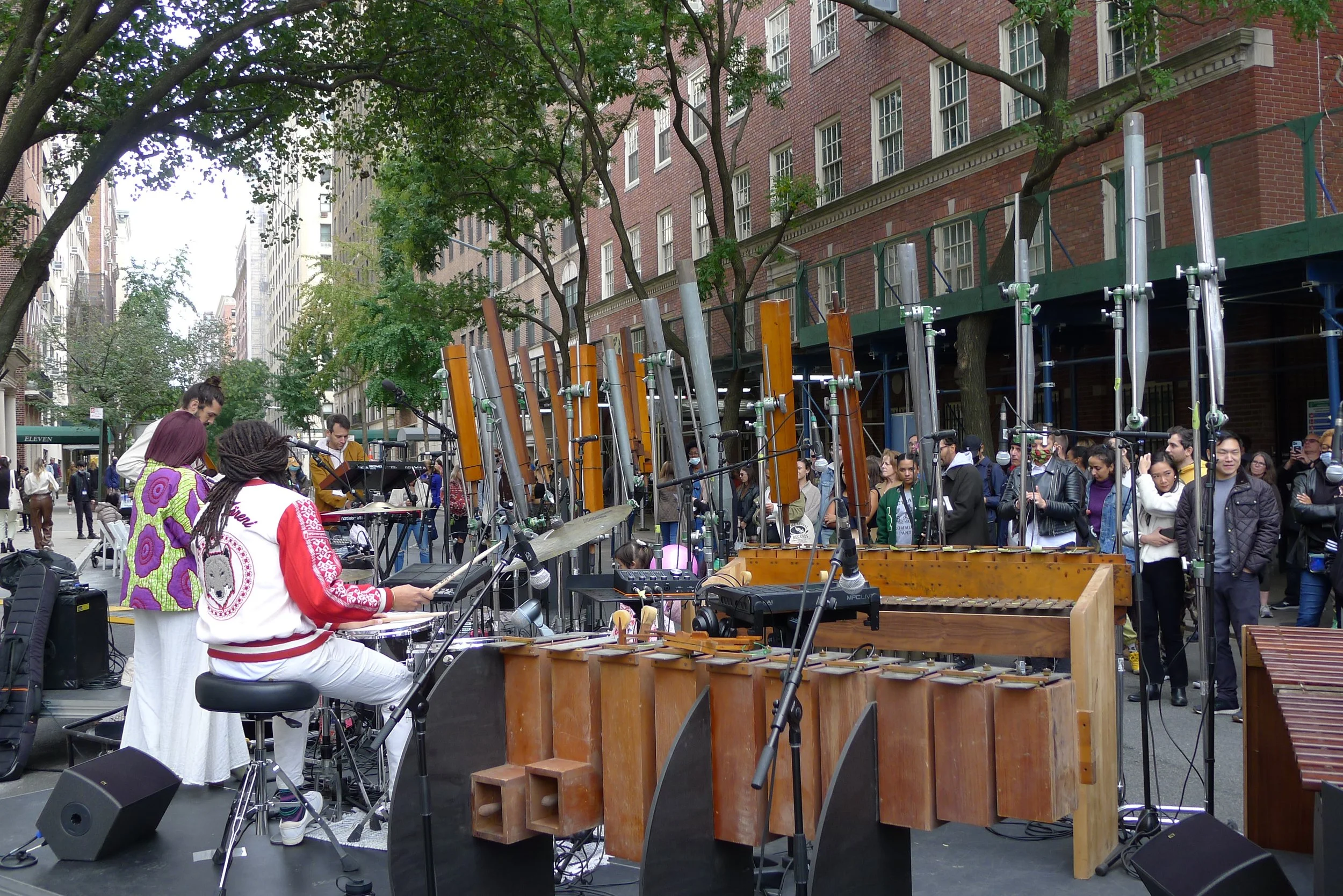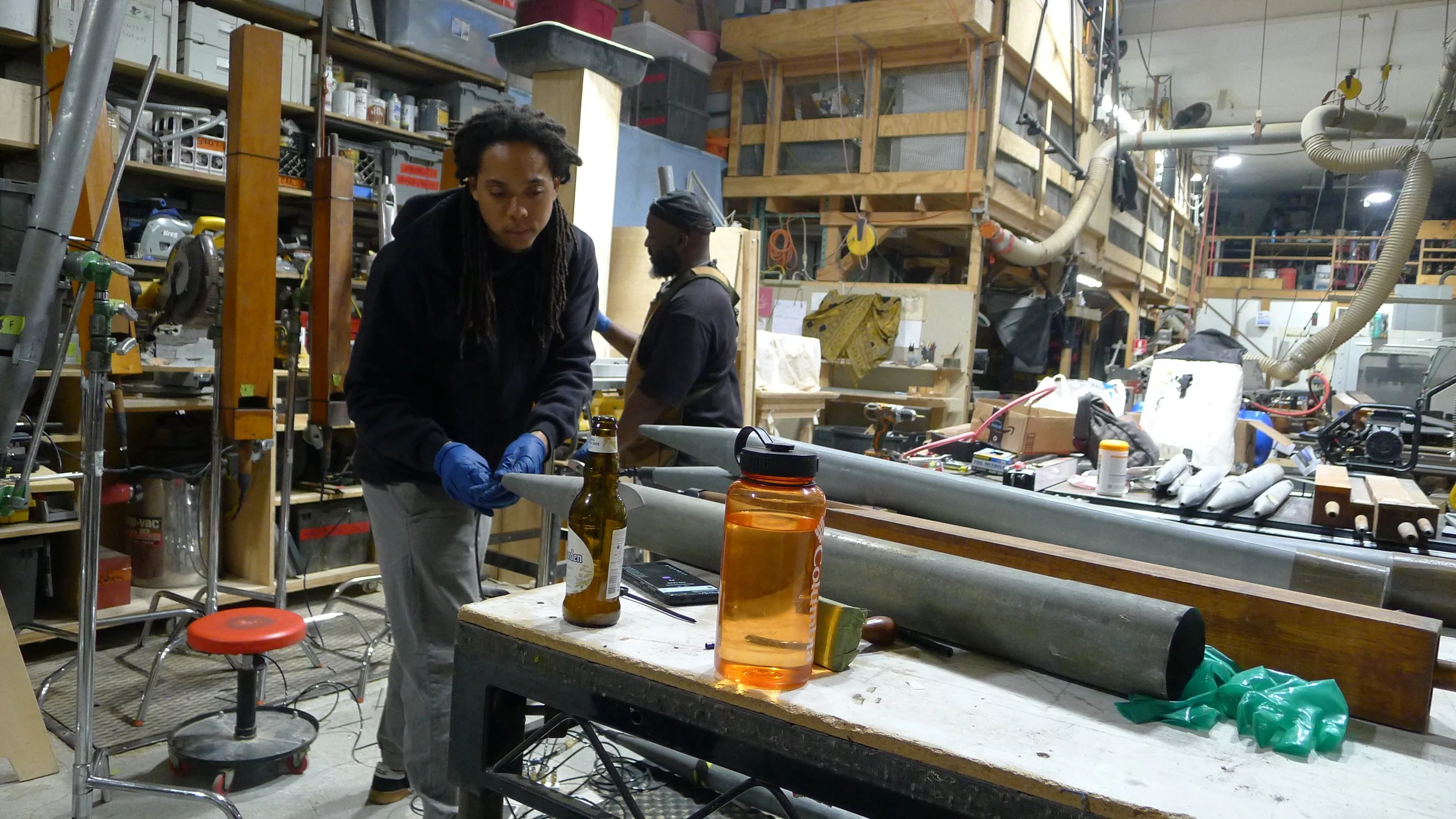Abandoned Orchestra (2021) performance, Guggenheim Museum
Abandoned Orchestra is a performance conceived and composed by Zane Rodulfo, with collaborator, Eto Otitigbe, that employs sound sculpture and allows for co-creation by the audience. Rodulfo leads a chamber ensemble of musicians who each plays works accompanying unique sound sculptures, made from repurposed organ pipes, created by Rodulfo and Otitigbe specifically for this performance.
Rodulfo originally began his search for organ pipes in 2020 when he collaborated with Otitigbe as a sound artist, composer & designer for Emanativ (2023), a commissioned public sound sculpture in East Harlem. A recent series of serendipitous events led Rodulfo to Ghent, NY, where he discovered a trove of abandoned musical instruments in a rundown barn. At Louden Estate in Ghent, Rodulfo and Otitigbe scoured the barn to source abandoned organ components to be repurposed for the sound sculpture, Abandoned Orchestra.
‘Abandoned Orchestra’ alludes to the abandoned and found instruments and components collaboratively ‘played’ in the sound sculpture and performance. It also suggests a call and response between The Zane Rodulfo Quartet and the audience, who are recruited to improvise along with the musicians. Further, Abandoned Orchestra draws from tradition of black electronic musicians who have created, modified and repurposed music equipment such as Kool Herc, Onyx Ashanti, King Tubby, Pamela Z, Herbie Hancock, and Lee “Scratch” Perry.
The musicians are situated within the interactive sound sculptures that can be activated by the audience. Through participation, the audience becomes part of the performing chamber ensemble, creating improvised and spontaneously composed music. Before the performance, the musicians familiarize the audience to the sculpture and how to sonically activate it. Notes of the musical keys being played by musicians correspond to the keys of the repurposed instruments/sculpture. The audience is provided with parameters for performance, but no specific instructions on when to activate sound during the set, giving the audience creative autonomy. In doing so, the barrier between audience and performer is deconstructed, establishing a common, egalitarian musical space. Between each set, the sound sculptures serve as interactive public installations. This collaborative performance serves as a reiteration of the contemporary chamber ensemble.
Zane’s website: www.zanerodulfo.com
All images courtesy of Lovelisa Dizon
Process






